Quincy Mill #1, Turbine House, & Dredge #2
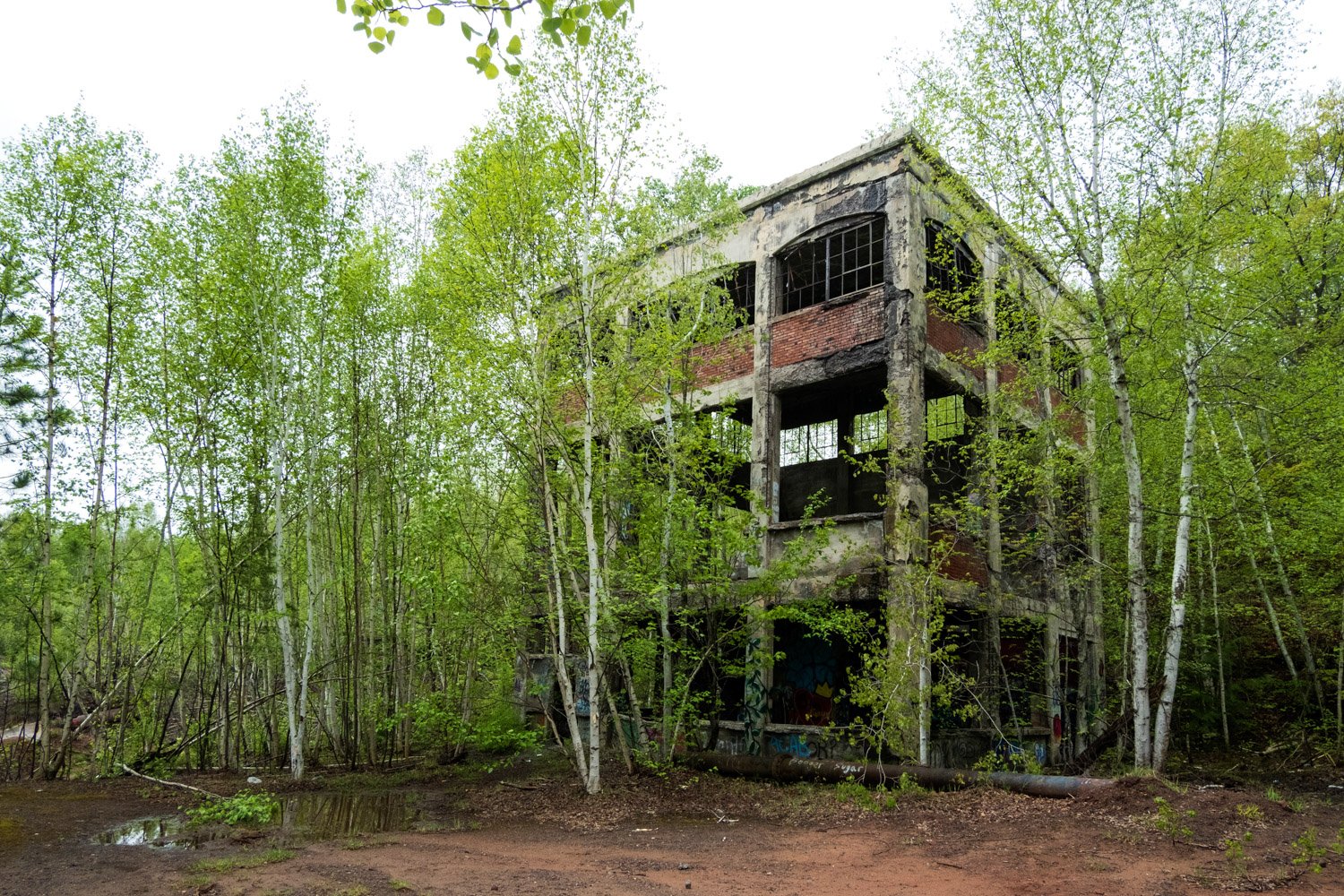
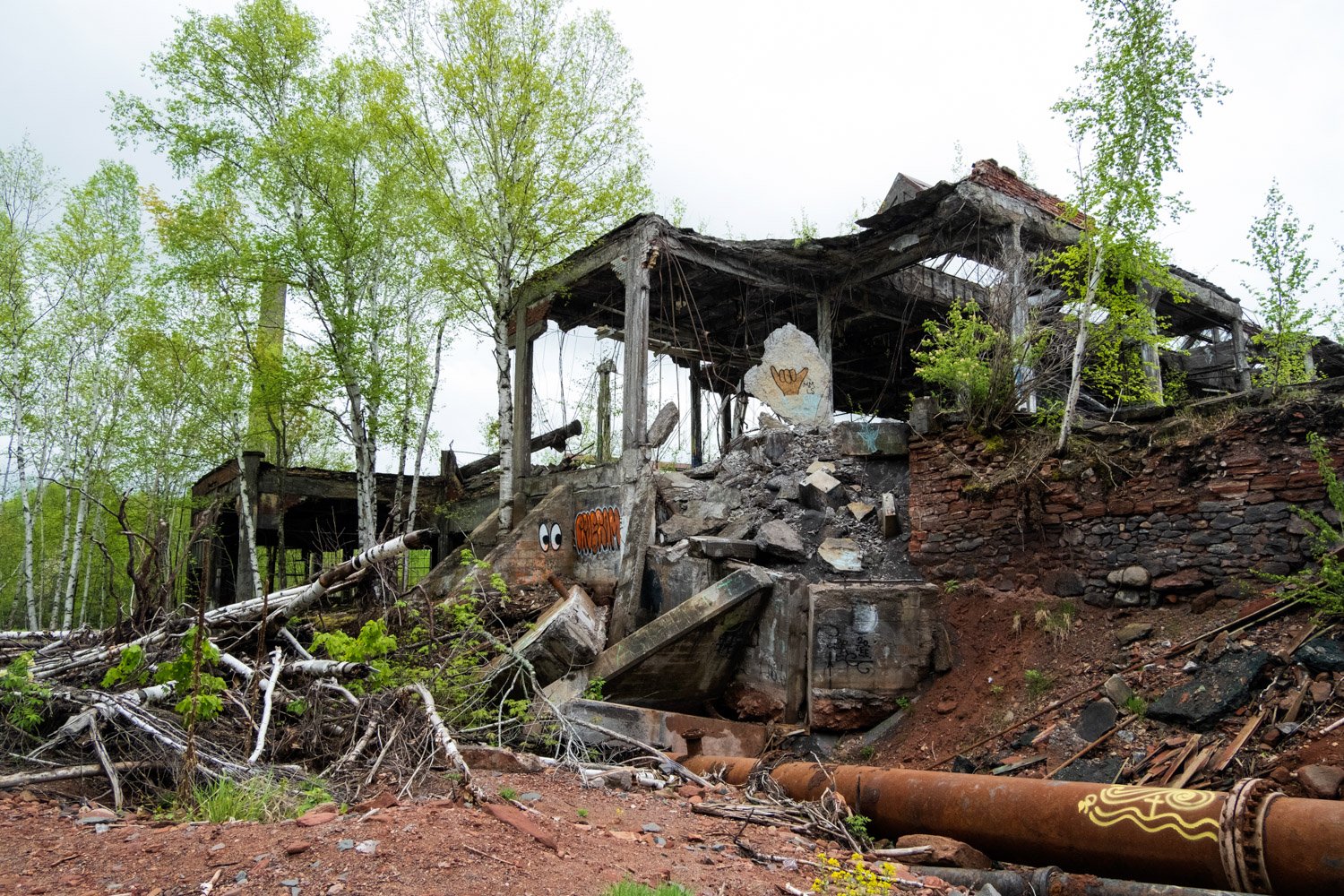
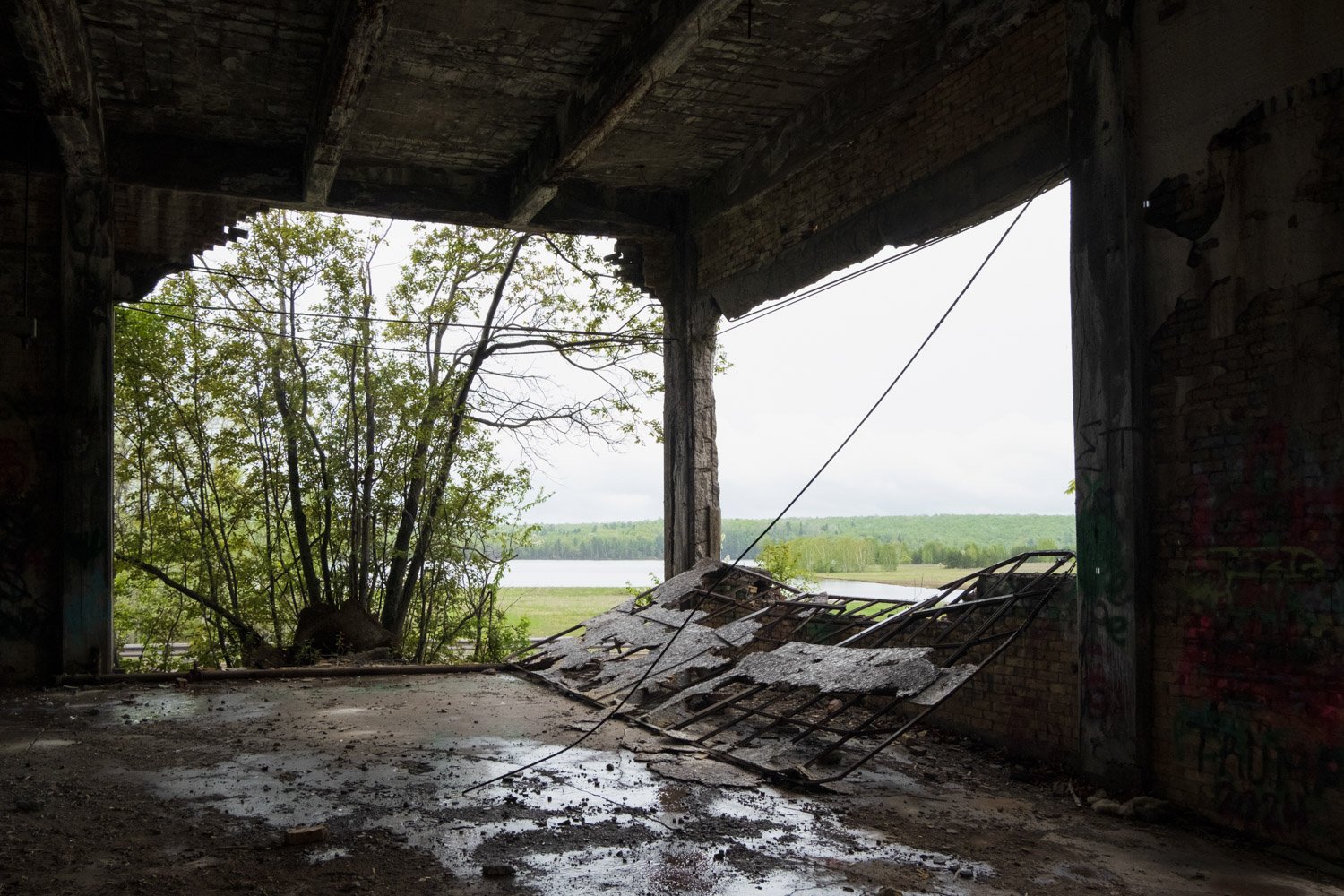
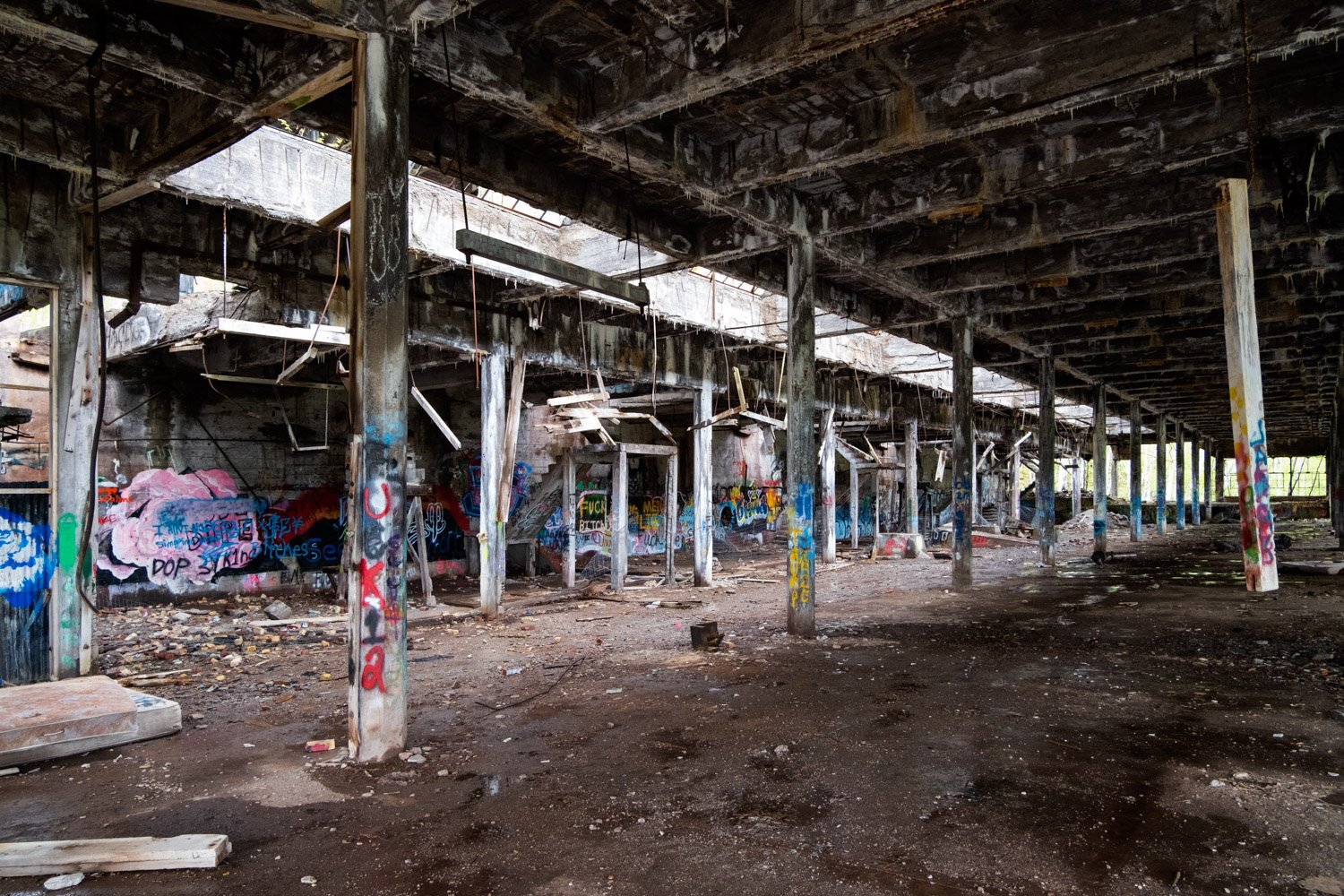
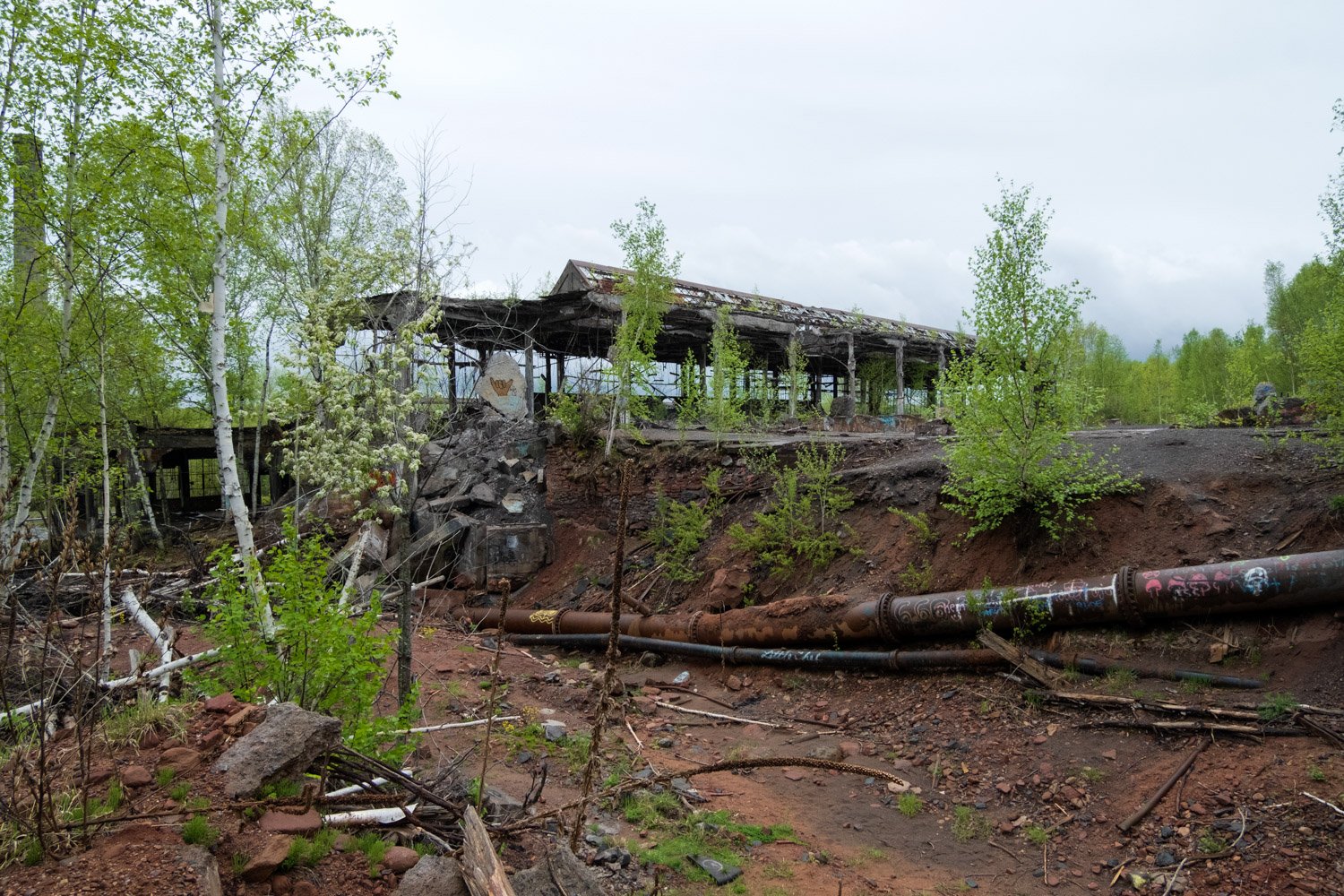

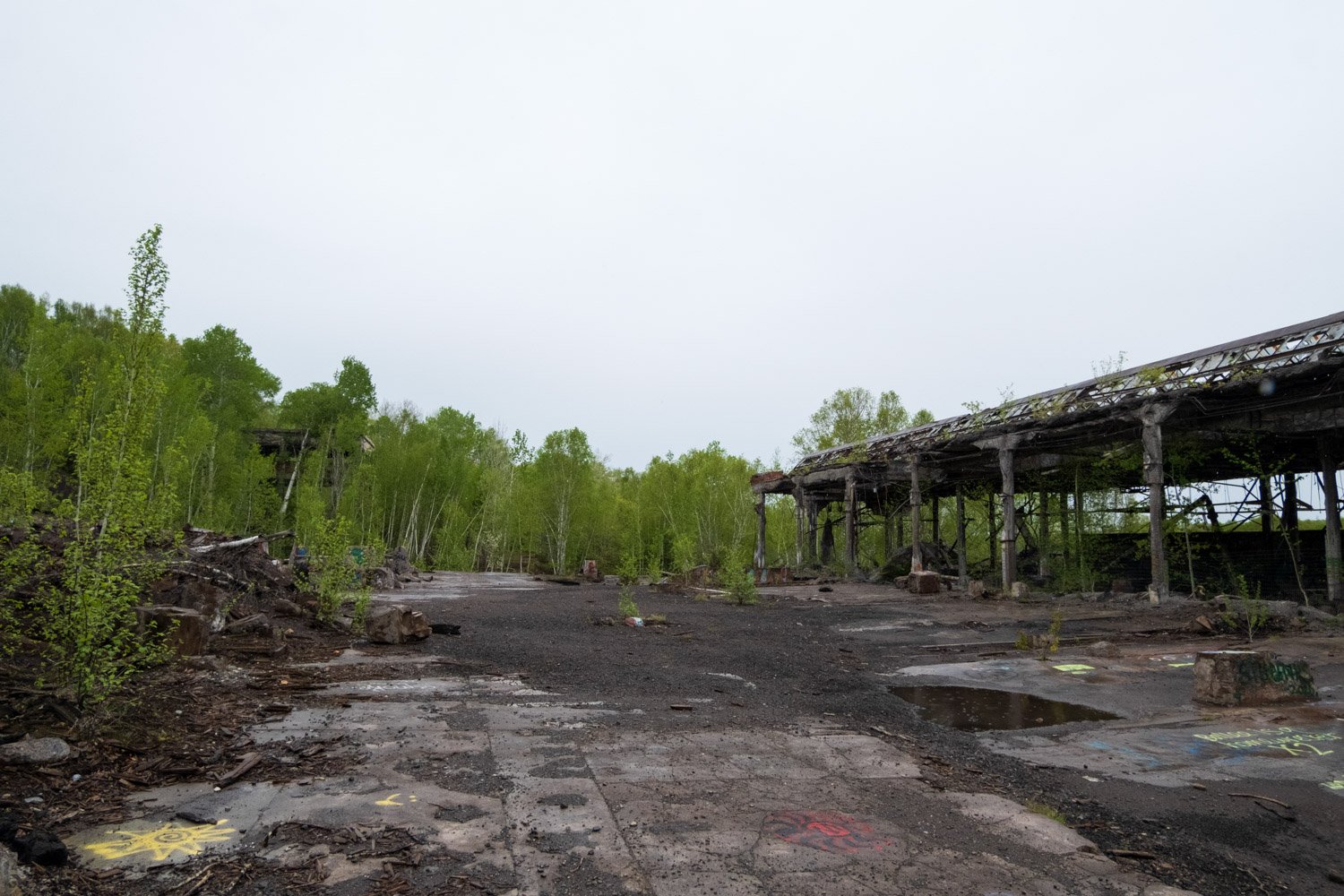
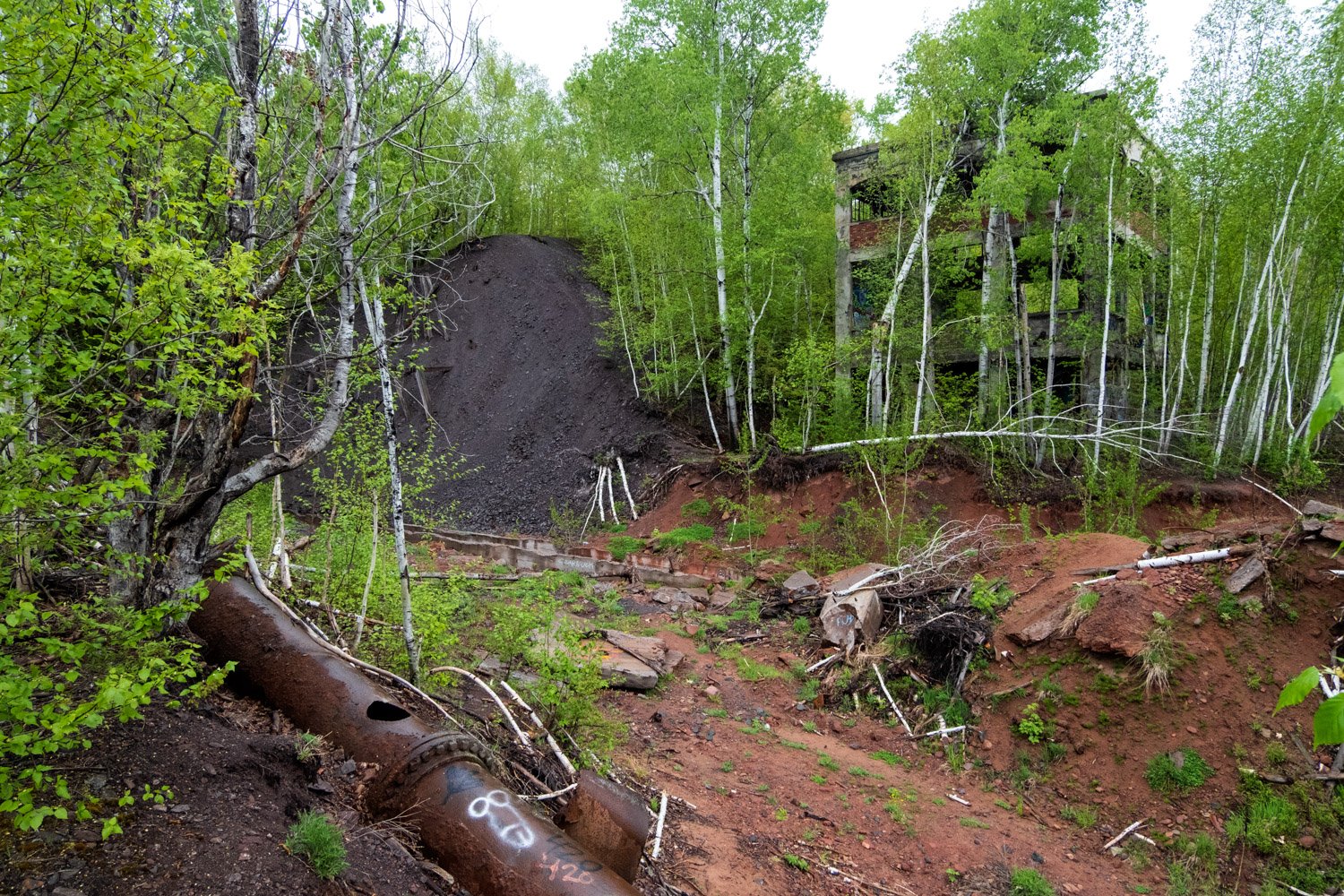
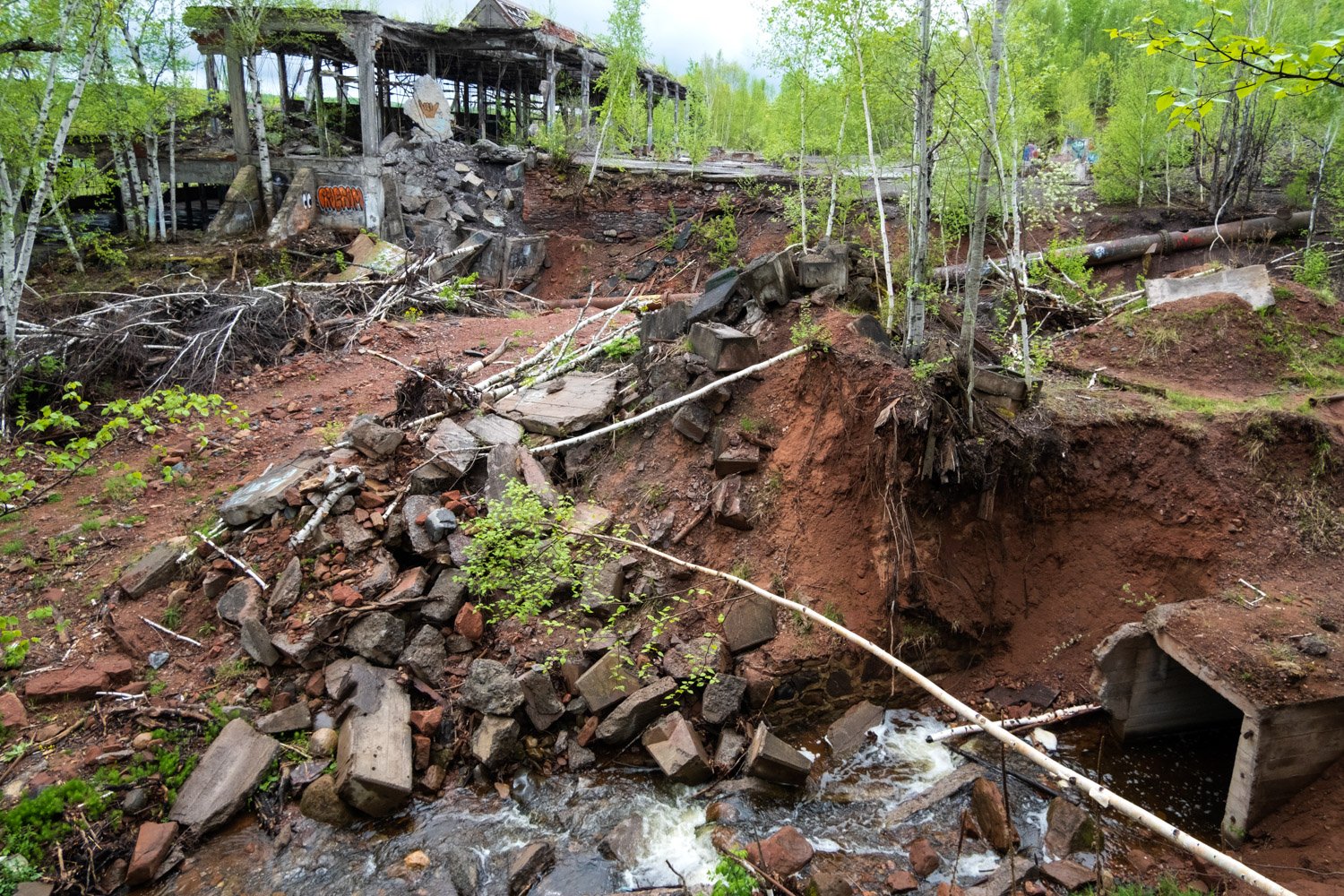
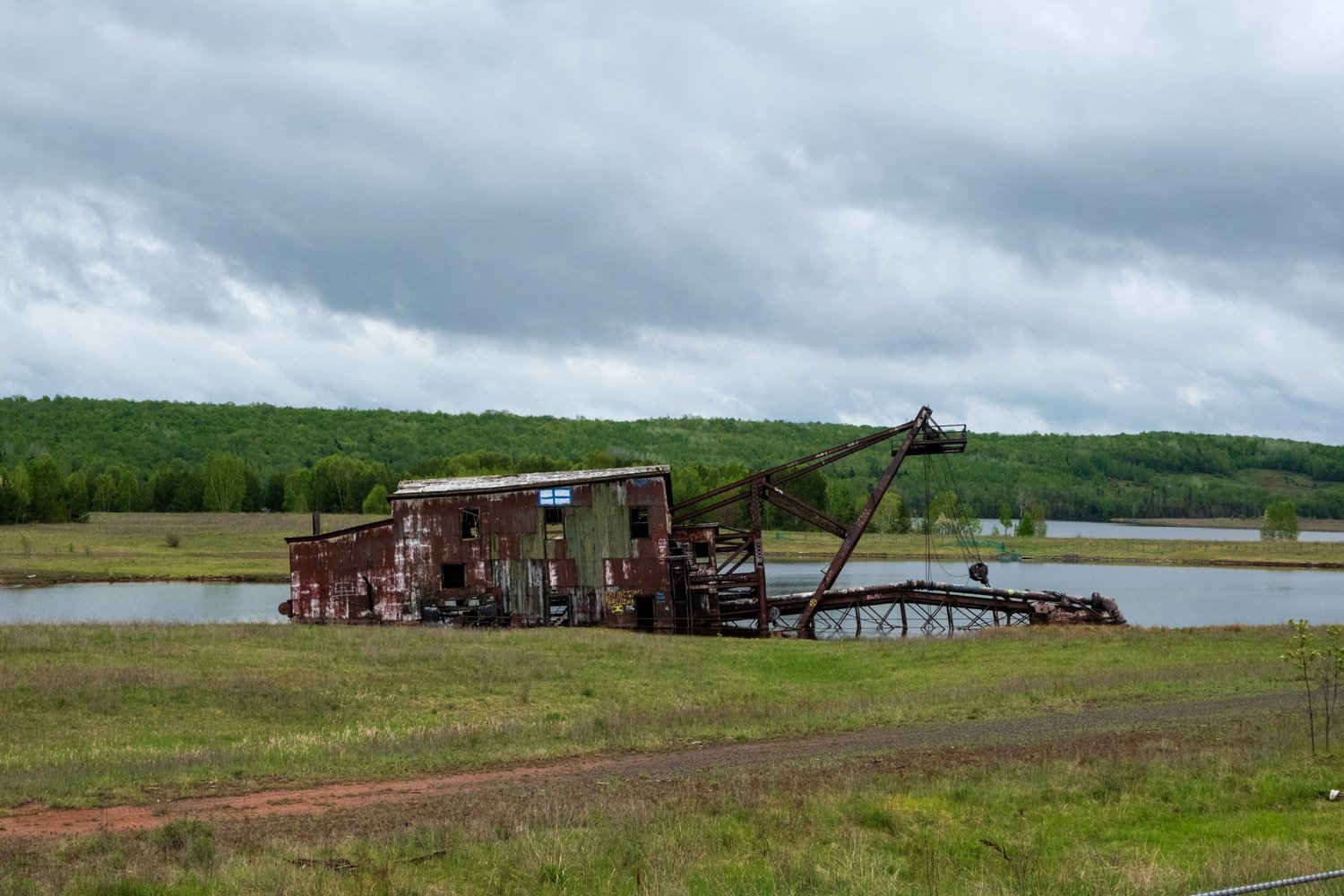
The Quincy Mine first began harvesting copper from the rugged landscape of the Keweenaw in the 1840s and quickly became one of the most successful and profitable mining operations in America. Located just north of Houghton outside of Hancock, the mine employed hundreds of miners and owned vast amounts of land where miners lived, worked, and spent their leisure time. Although the mines were extremely profitable, not much of that profit was shared with the miners or the area where the mines resided. The company resided in Massachusetts, and after the mines began to close in the 1920s, they abandoned many of their facilities, including Mill #1.
The Quincy Mining Company purchased a large plot of land on Torch Lake in the mid-to-late 1800s to serve as the site of its new mill after federal regulations forced the closure of its mill on Portage Lake. The mill on Torch Lake was expanded, upgraded, and continuously changed as milling technology got better and better. This continued until after World War One when the Quincy Mine began to slow production. World War Two brought production back online, but after the conclusion of the war, it slowed again the mill closed for good in the 1940s. Most of the buildings were demolished fairly soon after production ceased, but the newer addition to Mill #1 was completed around 1919, and the turbine house that was completed sometime around 1923 still remains today. I would imagine the company scrapped or reused what it could, leaving a small mill in case the need for a mill arose at that location. The buildings that do remain consist of reinforced concrete construction, which makes demolition expensive. They were built to last—and they have.
Across M-26 from Mill #1 sits the Quincy Dredge #2. The dredge was placed here to collect decades of discarded sand from the mill that had built up on the bottom of Torch Lake. The dredge filtered these sands for copper that had been left behind due to older, less advanced milling techniques. This copper could then be milled and sold. The dredge was built in 1914 for the Calumet and Hecla Mining Company and named the Calumet and Hecla Dredge #1. It was used at their Lake Linden Reclamation Plant, just four miles up the shores of Torch Lake, until 1951. The dredge was sold and moved south to be used by the Quincy Reclamation Facility (which started in 1943) alongside Quincy Dredge #1. The first dredge sank in 1956, and Quincy Dredge #2 sank in 1967. The first dredge was dismantled, and the second was not. It has sat cockeyed on the sandy bottom of Torch Lake ever since.
Quincy Dredge #2 was named a Michigan State Historic Site in 1978, and the Quincy Mining Company Stamp Mills Historic District was added to the National Register of Historic Places in 2007, where all three of the remaining structures reside. Mill #1, the turbine house, and Dredge #2 are all in extremely poor shape, covered in graffiti, and entangled in a battle with Mother Nature to remain standing. The parcel of land the dredge calls home is listed as being owned by Osceola Township, but the mill and turbine house lie within a large parcel of land owned by Lakeshore Estates, a private company based out of Houghton. The Quincy Creek still runs through the property, winding and curving through man-made gorges before spilling underneath M-26 and into Torch Lake.
There’s a ton to see here, and it won’t last forever, so I recommend seeing this one sooner than later! Please be respectful that Mill #1 and the turbine house are on private property and currently exist in a dangerous condition, so viewing from a distance is advised.
